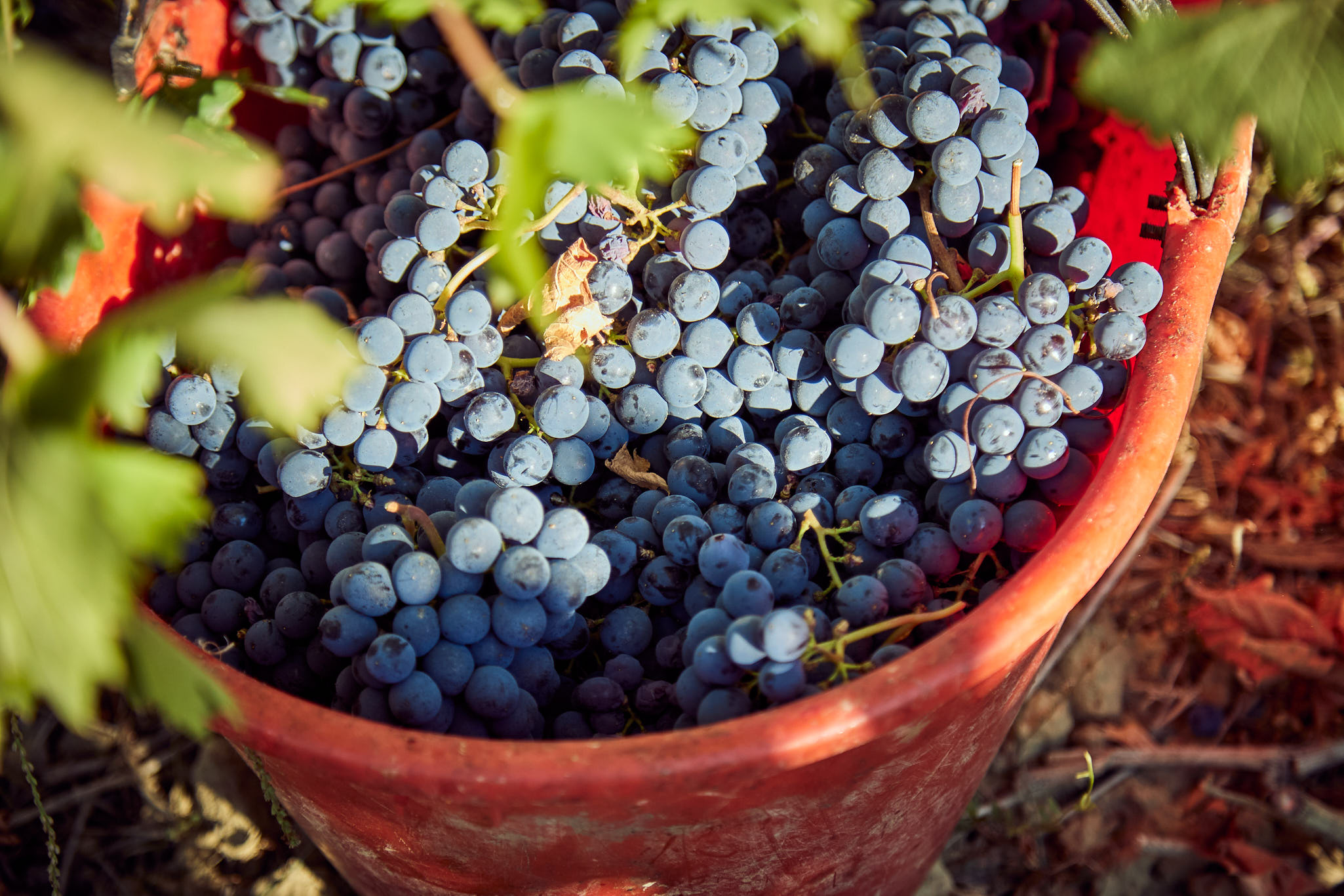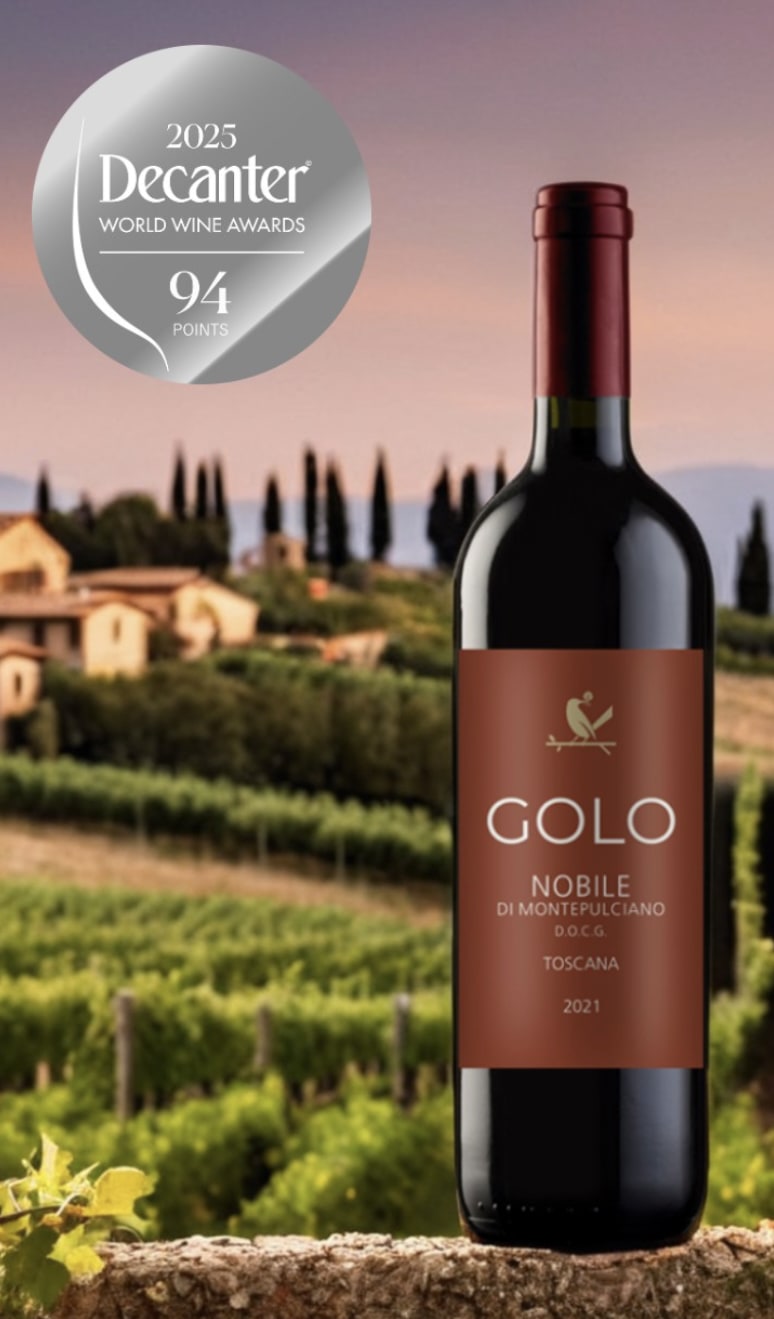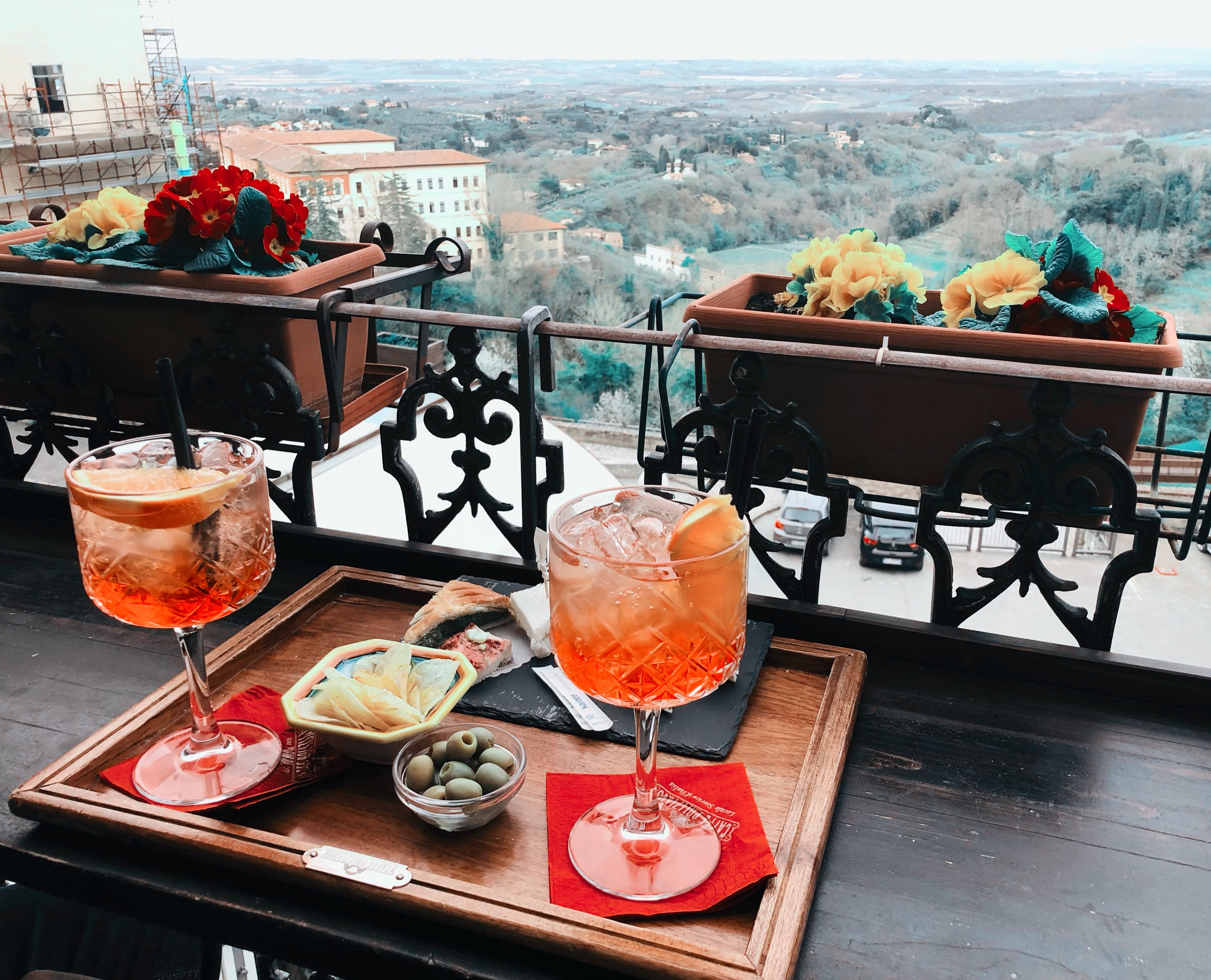The Essential Guide to Wine Tasting at Home in 2025
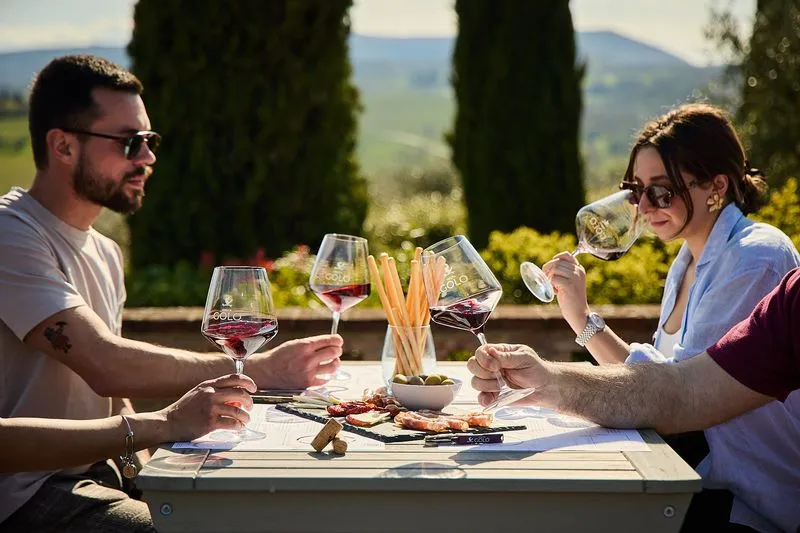
Imagine transforming your evenings with the elegance and excitement of wine tasting at home. In 2025, this beloved ritual blends timeless tradition with fresh, modern trends, inviting both newcomers and connoisseurs to explore the world of wine without leaving their living rooms.
This essential guide is your roadmap to hosting unforgettable tastings, offering step-by-step advice tailored for every skill level. From understanding fundamental tasting techniques to selecting the right wines and perfecting food pairings, you will gain confidence and skill with each pour.
Ready to elevate your wine journey? Let’s dive into the art and science of wine tasting at home, unlocking new flavors, connections, and experiences for you and your guests.
Understanding the Basics of Wine Tasting
Wine tasting at home is more than a simple activity—it’s a gateway to culture and sensory exploration. At its core, wine tasting means evaluating wine through sight, smell, and taste, uncovering its story in every glass. Historically, wine appreciation dates back centuries, evolving from ancient rituals to today’s sophisticated gatherings. In recent years, wine tasting at home has surged in popularity, with 2025 seeing trends like virtual tastings and increased accessibility. The benefits are clear: deeper social connections, sensory education, and pure enjoyment. For a deeper dive into the fundamentals, visit the wine tasting resource.
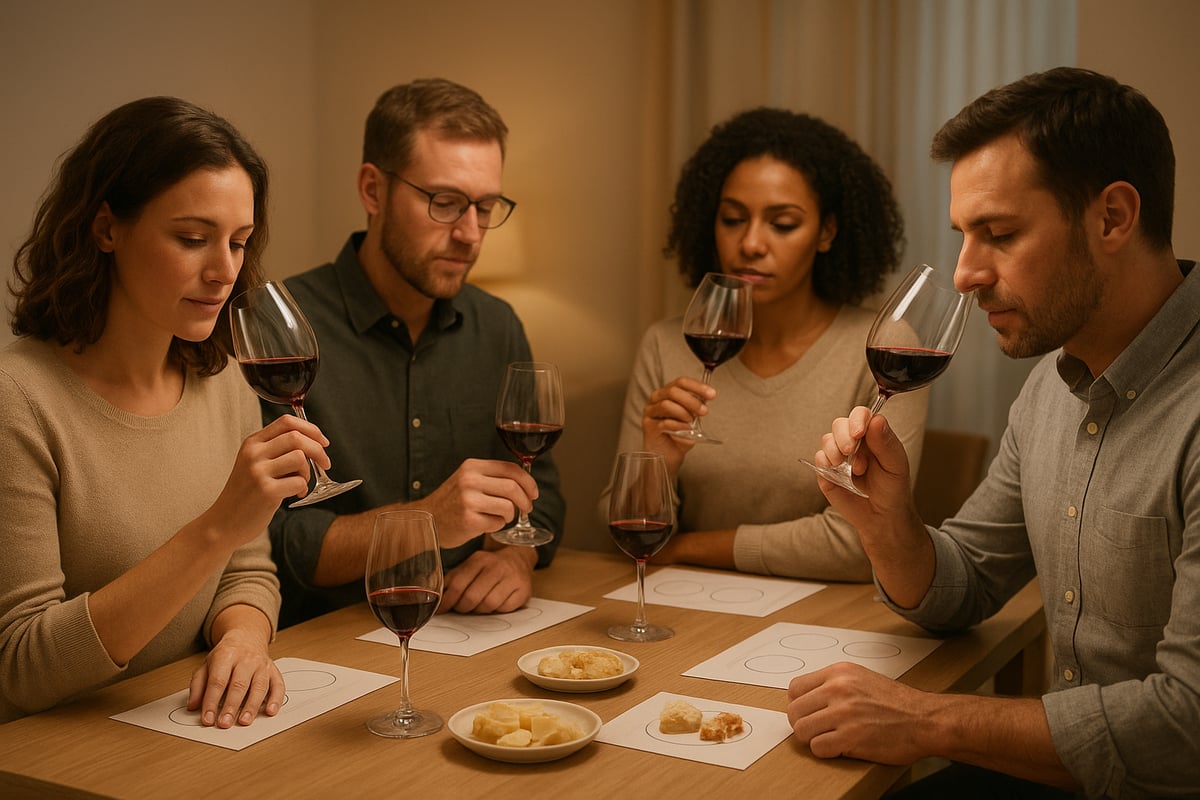
Key Elements of a Wine Tasting Experience
A successful wine tasting at home revolves around the five S’s: See, Swirl, Smell, Sip, and Savor. Begin by observing the wine’s color and clarity. Swirl the glass to release aromas, then inhale deeply to identify scents. Sip slowly, letting the flavors unfold, and finally savor the finish.
Proper glassware enhances each wine’s characteristics, while serving temperature ensures optimal flavor. The setting matters—choose soft lighting and a calm atmosphere to focus your senses. Evaluate the wine’s structure, aroma, and flavor profile as you go. Always taste from whites to reds, light to bold, to preserve your palate.
Common Wine Tasting Terms Explained
Understanding key terms is essential for wine tasting at home. Here are a few:
| Term | Meaning | Example |
|---|---|---|
| Tannin | Drying sensation from grape skins/seeds | Bold reds like Cabernet Sauvignon |
| Body | Weight or fullness on the palate | Light-bodied Pinot Noir vs. full-bodied Syrah |
| Acidity | Freshness and crispness | High in Sauvignon Blanc |
| Finish | Flavors left after swallowing | Lingering chocolate notes in Merlot |
| Bouquet | Combined aromas of aged wine | Earthy, nutty scents in aged reds |
| Vintage | Year grapes were harvested | 2020 vintage |
| Terroir | Influence of place and climate | Mineral notes from limestone soil |
Mastering these terms improves your ability to communicate tasting notes and enhances your wine tasting at home experience.
Types of Wine Tastings: Casual vs. Formal
When planning wine tasting at home, consider the format. Casual tastings often feature stand-up, walk-around styles where guests sample and mingle. This setup encourages conversation and is ideal for beginners. In contrast, formal tastings are seated, sometimes blind, fostering focused discussion and deeper analysis.
| Format | Pros | Cons |
|---|---|---|
| Casual | Relaxed, social, interactive | Less structured learning |
| Formal | Educational, detailed, focused | Can feel intimidating |
In 2024-2025, most home tastings favor interactive, casual formats, making wine tasting at home accessible and enjoyable for all.
The Social and Educational Value of Wine Tasting
Wine tasting at home offers more than just flavor—it builds community and sparks conversation. Learning about wine regions, varietals, and winemaking techniques broadens your horizons. Over time, regular tastings help develop your palate and sensory skills.
Many enthusiasts join monthly tasting groups, host themed events, or participate in virtual wine clubs. These experiences make wine tasting at home both a social event and an educational journey, enriching every participant’s appreciation of wine.
Planning Your At-Home Wine Tasting: Step-by-Step
Transforming your wine tasting at home into a seamless, memorable event starts with thoughtful planning. Whether you are hosting a casual get-together or an elegant evening, each detail shapes the overall experience. Let’s walk through every essential step to ensure your event is enjoyable, engaging, and truly unforgettable.
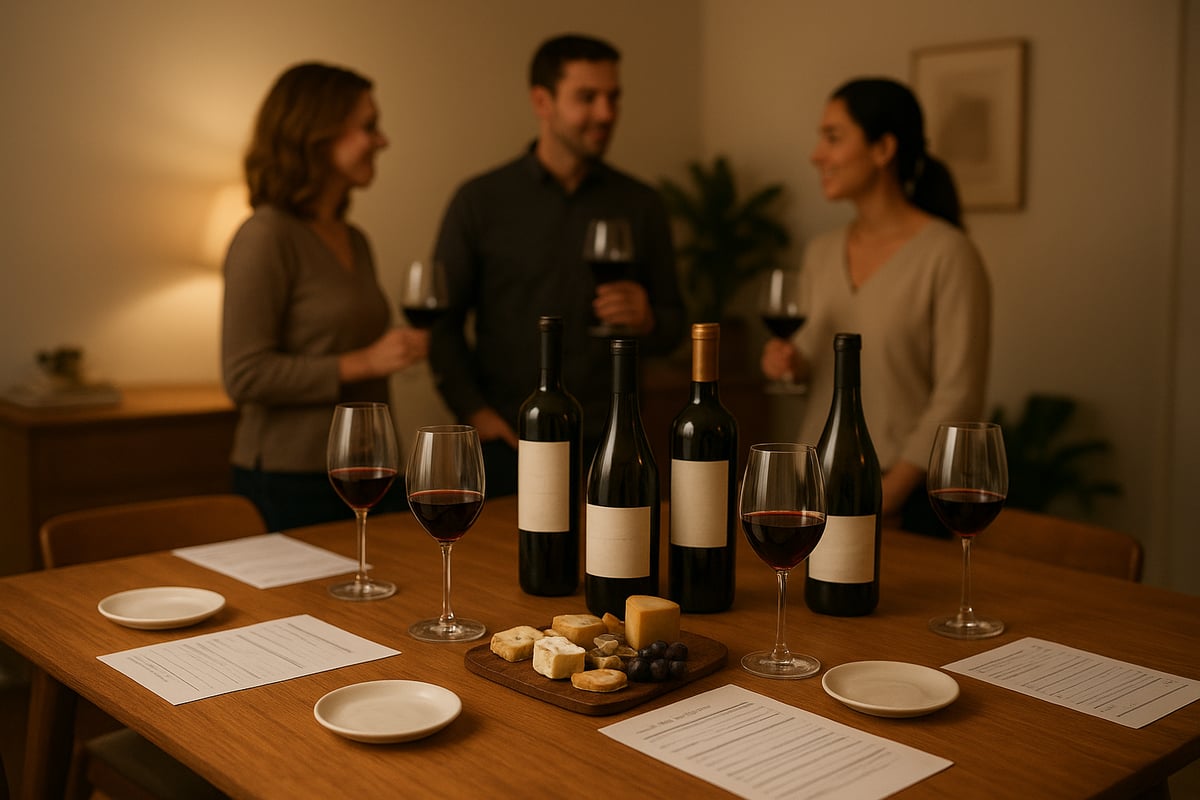
Setting Your Wine Tasting Goals and Theme
Start by identifying the purpose and audience for your wine tasting at home. Are you inviting seasoned wine enthusiasts, or is your group made up of friends and family new to tasting? Clarifying your goals will inform every other decision.
Next, select a theme to guide your wine choices and create a cohesive experience. Popular options include:
- Regional focus (like “Tour of Tuscany”)
- Varietal comparison (such as Pinot Noir from different countries)
- Vertical or horizontal tastings (multiple vintages or producers)
- Blind tastings for an element of surprise
Themes not only inspire excitement but also increase guest satisfaction by up to 30 percent, according to recent event surveys. Consider how your theme will influence food pairings, décor, and even conversation topics. Drawing inspiration from traditional wine cultures, such as those highlighted in Lessons we have learned from the Italians, can add authenticity to your wine tasting at home.
Selecting and Sourcing Wines
Choosing wines for your wine tasting at home involves balancing budget, accessibility, and variety. Aim for a selection of four to six bottles, which allows for meaningful comparison without overwhelming the palate.
Source wines from a blend of local shops, online retailers, and wine clubs. Supporting boutique and sustainable wineries adds a unique touch and often leads to discovery of new favorites. Consider mixing international labels with local gems for a broader tasting adventure.
When selecting, think about how each wine fits your theme. For example, a “New World versus Old World” tasting might include both a California Chardonnay and a Burgundy. Always check the availability of your chosen wines to avoid last-minute surprises.
Preparing Your Space and Supplies
A successful wine tasting at home relies on careful preparation of your space and supplies. Essential items include:
- Quality glassware for each guest
- Spittoons or dump buckets
- Water pitchers and palate cleansers (like bread or plain crackers)
- Tasting mats or sheets for notes
Decide between tasting stations and a communal table based on your group size and format. Lighting should be soft yet bright enough to observe wine color and clarity. Opt for neutral table settings and minimal décor to keep the focus on the wines.
Arrange seating to match your event style. For a formal tasting, organize seats in a circle or around a table. For casual mingling, create smaller conversation areas. A checklist will help ensure you have everything needed for a smooth wine tasting at home.
Sending Invitations and Setting Expectations
Crafting invitations for your wine tasting at home sets the tone and ensures everyone is prepared. Choose between digital invites for convenience or printed cards for a special touch.
Include all essential details:
- Date, time, and location
- Theme and dress code (if any)
- Ground rules, such as tasting portions and etiquette
- Instructions for BYO wines or sharing tasting notes
Encourage guests to actively participate by bringing a favorite bottle or contributing to the discussion. An example invitation for 2025 might read: “Join us for a ‘Rosé All Day’ tasting—bring your favorite bottle and come ready to share your impressions!” Clear communication helps everyone know what to expect and enhances the wine tasting at home experience.
Creating a Tasting Schedule and Flow
A well-structured schedule keeps your wine tasting at home engaging and on track. Begin with a warm welcome as guests arrive, followed by guided tasting rounds. Allocate about five to ten minutes per wine, allowing time for discussion after each pour.
Sample schedule:
- Welcome and introductions
- First tasting round
- Group discussion and note sharing
- Reveal wines (if blind tasting)
- Light meal or snacks to conclude
Balance structure with flexibility, allowing conversations to flow naturally. This approach ensures everyone stays involved and your event maintains a lively pace.
Safety, Moderation, and Enjoyment
Prioritize safety and moderation for every wine tasting at home. Serve wines in tasting portions of one to two ounces each, giving guests the opportunity to savor and compare without excess.
Always provide water, snacks, and non-alcoholic options. Encourage responsible consumption and arrange safe transportation for anyone who may need it. Be aware of local laws regarding alcohol service in private homes.
A focus on moderation not only promotes guest well-being but also enhances enjoyment, allowing everyone to fully appreciate the wines and the experience. With thoughtful planning, your wine tasting at home will be both safe and memorable.
Mastering Wine Tasting Techniques at Home
Unlocking the secrets of wine tasting at home is both an art and a science. With a few proven techniques, you can transform a casual sip into a full sensory experience. Mastering these methods will elevate every gathering and help you savor each bottle to its fullest.
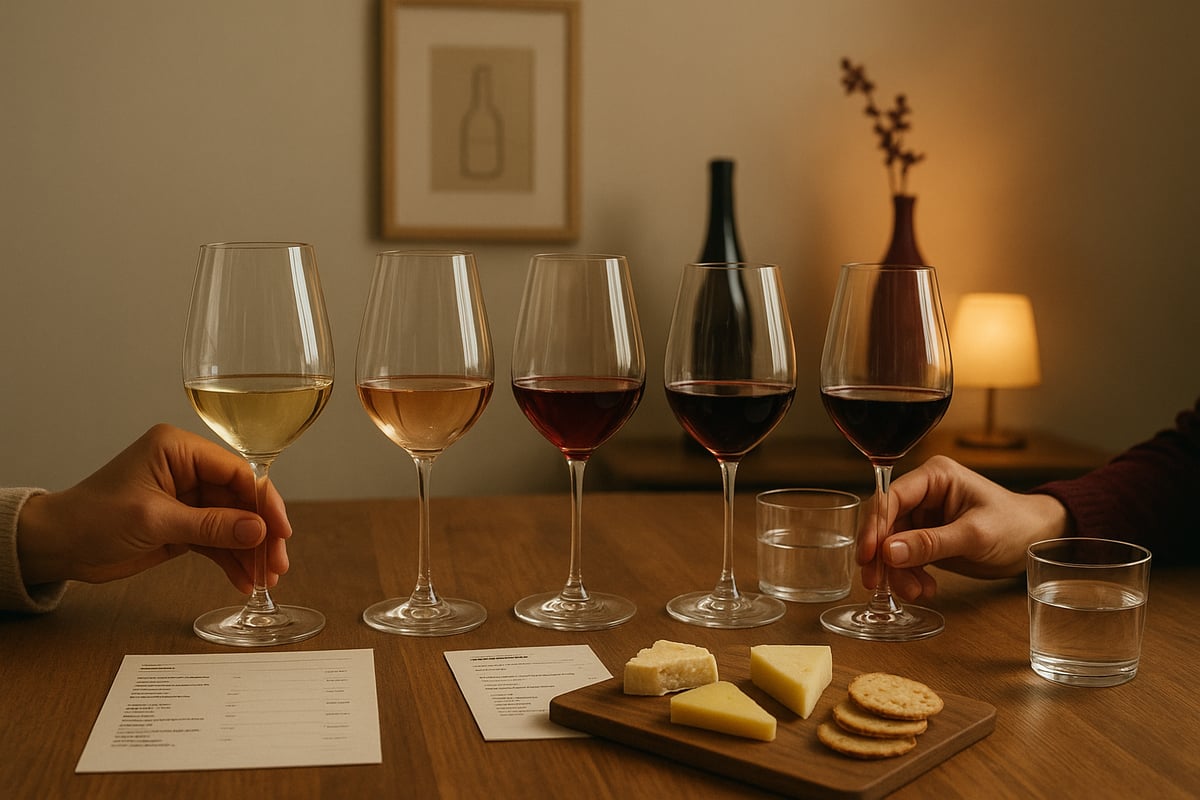
The Five S’s: See, Swirl, Smell, Sip, Savor
Begin every wine tasting at home with the Five S’s. These steps guide you through evaluating wine like a professional.
- See: Observe the wine’s color and clarity against a white background. Notice if it is pale, deep, or vibrant.
- Swirl: Gently rotate the glass to aerate the wine, releasing its aromas. Look for “legs” or “tears” that indicate alcohol and body.
- Smell: Inhale deeply. Try to identify fruit, floral, spice, or earthy notes. This step prepares your palate.
- Sip: Take a small taste, letting the wine coat your mouth. Focus on flavors, acidity, tannin, and body.
- Savor: Reflect on the finish. Does the flavor linger or fade quickly? This tells you about the wine’s quality.
Practicing these steps at every wine tasting at home builds your confidence and sharpens your senses.
Tasting Notes: How to Record and Share Impressions
Documenting your impressions is a vital part of wine tasting at home. Use tasting sheets or a digital app to keep track.
Key attributes to note include:
- Appearance: Color, intensity, and clarity.
- Nose: Aromas detected before tasting.
- Palate: Flavors, texture, and balance.
- Finish: Length and aftertaste.
- Overall Impression: Would you buy or recommend it?
Comparing notes with others sparks lively conversation and helps everyone learn. For example, when tasting a Montepulciano, you might note its deep ruby color, aromas of cherry and plum, and a velvety finish. For more background on this varietal, explore Golo Rosso di Montepulciano: the birth of a new star.
| Attribute | Example (Montepulciano) |
|---|---|
| Appearance | Deep ruby, clear |
| Nose | Cherry, plum, spice |
| Palate | Medium body, soft tannins |
| Finish | Long, velvety |
| Impression | Elegant, food-friendly |
Blind Tasting: Adding Challenge and Fun
Blind tasting adds excitement and objectivity to wine tasting at home. Wrap bottles in foil or bags and number them to conceal their identity.
Benefits include:
- Training your palate to recognize varietals and regions.
- Removing preconceptions about price or label.
- Sparking friendly competition among guests.
After everyone tastes and records their guesses, reveal the wines and discuss surprises. Try a blind flight of three Italian reds to see who can best identify each. This format keeps wine tasting at home interactive and educational.
Engaging Your Senses: Enhancing the Experience
A well-curated environment heightens every wine tasting at home. Minimize distractions by turning off strong scents and using neutral lighting.
Set the mood with soft music, such as a Tuscan playlist, and consider adding textured linens or colorful decor to stimulate the senses. Incorporating multisensory elements, like pairing wines with different aromas or textures, deepens appreciation.
Encourage guests to describe not just taste but also the feel, sound, and look of each wine. This approach makes wine tasting at home more immersive and memorable for everyone.
Troubleshooting Common Tasting Issues
Even the best wine tasting at home can encounter challenges. Be prepared to identify and handle wine faults such as cork taint, oxidation, or heat damage. If a wine seems off, set it aside and move on.
Palate fatigue is common after multiple tastings. Offer water, plain bread, or crackers as palate cleansers, and schedule short breaks to refresh senses. Rotating between different wine styles also helps keep the experience enjoyable.
With these strategies, you can ensure that every wine tasting at home remains smooth, educational, and fun.
Perfect Pairings: Food and Wine Matching at Home
Pairing food and wine is a cornerstone of any wine tasting at home. The right combinations elevate both elements, transforming a simple evening into a sensory journey. Whether you are new to wine or an experienced enthusiast, understanding the fundamentals of pairing will enhance your entire tasting experience.
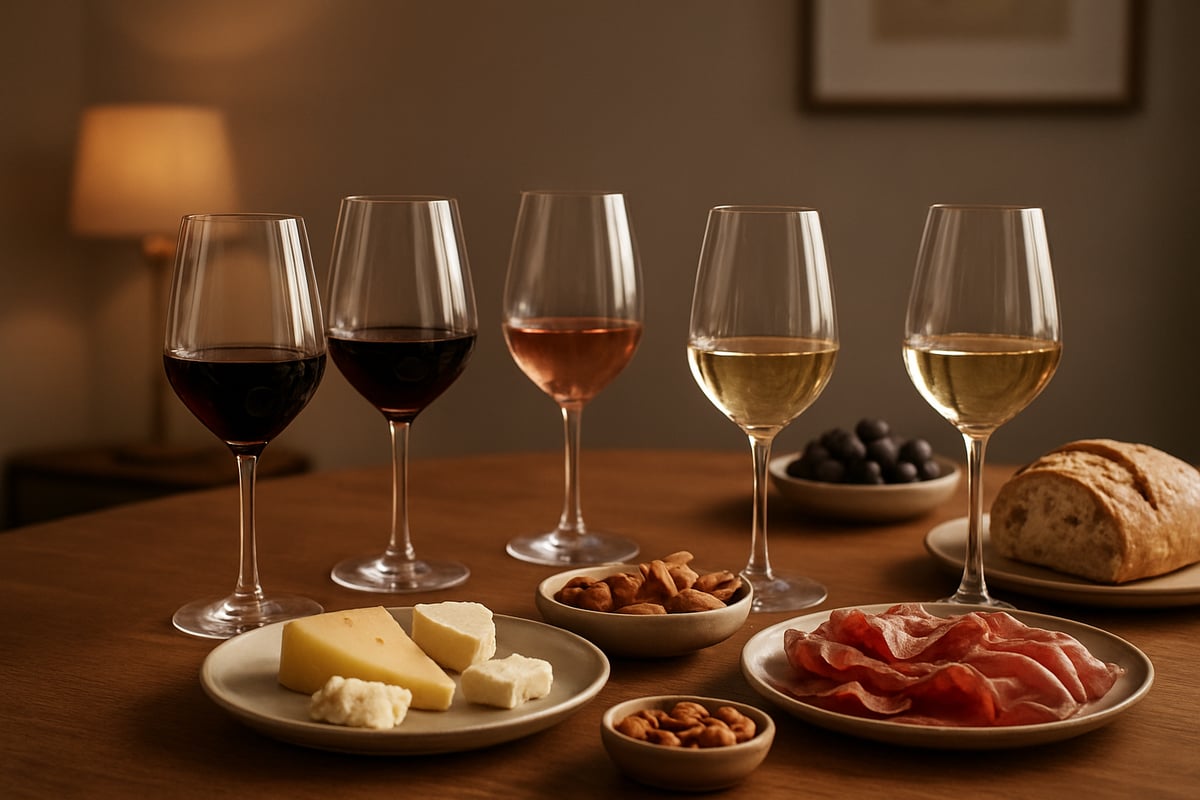
The Principles of Food and Wine Pairing
Balance is key in any wine tasting at home. Acidity, sweetness, tannin, and body all play roles in how food and wine interact. Classic rules suggest pairing red wines with meats and white wines with fish, but today's tastings encourage experimentation.
Regional pairings are especially rewarding. For example, a Sangiovese from Tuscany pairs beautifully with local Pecorino cheese. Exploring specific regions, such as those highlighted by The consortium of Vino Nobile di Montepulciano, can inspire themed menus and deepen your appreciation for wine tasting at home.
Consider the wine's structure and the dish's flavors. A crisp Sauvignon Blanc may cut through creamy goat cheese, while a robust Malbec can match the intensity of blue cheese. Remember, the best pairings often come from trying new combinations and noting personal preferences.
Building a Tasting Menu: Snacks and Small Plates
A thoughtfully curated menu elevates wine tasting at home. Small plates allow guests to explore a range of flavors without overwhelming the palate. Cheese boards are a classic choice, featuring soft goat cheese, aged cheddar, blue cheese, and crackers.
Complement with charcuterie, olives, toasted nuts, and fresh bread for variety. For a seasonal touch, add ripe figs or roasted vegetables. Try pairing goat cheese with Sauvignon Blanc or blue cheese with Malbec for memorable matches.
Keep portions modest so each wine stands out. Offer a mix of salty, creamy, and umami-rich foods to showcase different wine styles. This approach ensures your wine tasting at home remains both engaging and palate-friendly.
Creating a Cohesive Tasting Experience
The harmony between food and wine is essential for a seamless wine tasting at home. Start by coordinating the food menu with your wine selection and tasting theme. If you're exploring Italian varietals, serve Mediterranean-inspired snacks to reinforce the experience.
Serve snacks at intervals rather than all at once. This pacing prevents palate fatigue and allows guests to focus on each wine. Neutral snacks like plain bread or water crackers can help reset the palate between pours.
Timing is also important. Decide if food will be served before, during, or after the tasting rounds. Staggering food service encourages conversation and lets guests fully appreciate the nuances of each wine tasting at home.
Accommodating Dietary Preferences and Restrictions
Hosting a wine tasting at home means making everyone feel welcome. Always ask guests about dietary restrictions in advance. Offer vegetarian, vegan, and gluten-free options, such as plant-based cheeses, seed crackers, or marinated vegetables.
Label allergens clearly on tasting menus. Providing ingredient lists ensures transparency and safety for all participants. For example, pair a vegan cheese with a crisp Pinot Grigio for a fresh and inclusive tasting experience.
By planning ahead, you create a relaxed environment where everyone can enjoy wine tasting at home, regardless of dietary needs. This attention to detail reflects thoughtful hosting and elevates the overall event.
Elevating Pairings with Presentation and Storytelling
Visual appeal and storytelling enhance any wine tasting at home. Arrange food on wooden boards or slate platters for a rustic yet refined look. Use pops of color from fresh fruit or herbs to make plates inviting.
Share the story behind each wine and food pairing. Explain why a certain cheese complements a specific varietal or how a dish reflects regional traditions. Encourage guests to share their own tasting impressions.
Interactive elements, like inviting guests to vote on their favorite pairing, spark conversation and engagement. These touches make wine tasting at home not just a meal, but a memorable cultural and sensory adventure.
Hosting an Unforgettable Wine Tasting Event
Creating a memorable wine tasting at home goes beyond pouring a few bottles. Every detail, from ambiance to activities, shapes the experience and leaves a lasting impression on your guests. With the right touches, your event can become the highlight of the season.
Creating the Perfect Ambiance
Setting the right mood is essential for a successful wine tasting at home. Begin by selecting soft lighting—candles or dimmable lamps work well—to create a relaxing environment. Background music, such as jazz or classical, adds a layer of sophistication without overpowering conversation.
Choose table settings that reflect your theme. Use wine-themed accessories like decanters, tasting mats, or regional maps to spark interest. Neutral tablecloths and simple centerpieces keep the focus on the wines. For a deeper dive into the traditions and social aspects of wine, explore Discover the wine culture of the territory. This resource can inspire your setup and help foster a sense of connection around your wine tasting at home.
Interactive Elements and Games
Engage your guests with fun, interactive elements that elevate your wine tasting at home. Wine trivia is always a crowd-pleaser, offering questions about regions, grape varieties, or famous vintages. Tasting challenges, like blind tastings or palate quizzes, invite friendly competition among participants.
Consider themed competitions such as “Best Tasting Note” or “Guess the Grape.” These activities encourage everyone to participate, regardless of their wine knowledge. By integrating games, you transform a traditional wine tasting at home into a dynamic, laughter-filled gathering that keeps guests entertained from start to finish.
Fostering Conversation and Education
One of the greatest joys of wine tasting at home is the opportunity to learn and share together. Guide group discussions by inviting guests to describe their impressions of each wine. Sharing fun facts about winemaking, grape origins, or the history behind a bottle adds depth to the tasting.
Encourage everyone to contribute their personal wine experiences, whether it is a favorite vineyard visit or a memorable bottle. This exchange of stories not only builds community but also enriches the educational aspect of your wine tasting at home, making the experience both social and enlightening.
Capturing Memories: Photos and Keepsakes
Preserving moments from your wine tasting at home enhances the sense of occasion. Set up a dedicated photo booth or backdrop with wine-themed props for guests to capture candid shots. A simple polaroid camera or smartphone can do the trick.
Personalized tasting sheets or scorecards let guests jot down their thoughts and take home a souvenir. Consider sending guests home with mini bottles, recipe cards, or even a group photo from the evening. These keepsakes make your wine tasting at home memorable long after the last glass is poured.
Troubleshooting and Adapting on the Fly
Even the best-planned wine tasting at home can encounter surprises. If a wine is flawed or corked, move on gracefully and keep spirits high. For spills, have napkins and cleaning supplies on hand to manage quickly.
Accommodate late arrivals by welcoming them with a quick recap and a fresh glass. If a wine does not meet expectations, pivot the conversation to what guests notice about it. Flexibility and a positive attitude ensure your wine tasting at home remains enjoyable and stress-free, no matter what comes your way.
The Future of At-Home Wine Tasting: Trends and Innovations for 2025
The landscape of wine tasting at home is evolving rapidly in 2025, blending technology, sustainability, and personalization like never before. These innovations are transforming how enthusiasts connect, learn, and savor wine together, all from the comfort of their homes.
Tech-Savvy Tastings: Virtual and Hybrid Experiences
Virtual wine tasting at home has surged, allowing friends and family to connect across distances with ease. In 2025, hybrid events combine in-person gatherings and remote participation, making wine tasting at home more accessible than ever.
Popular tools include video conferencing platforms, curated tasting kits shipped to guests, and interactive digital wine clubs. These innovations create a seamless experience, bridging the gap between traditional in-person tastings and the convenience of modern technology.
Recent data shows a 40 percent increase in virtual tastings since 2023, reflecting a shift in how people experience wine tasting at home. Hosting a hybrid event lets you include local and distant guests, fostering a sense of community no matter where participants are located.
Sustainable and Local Focus
Sustainability is at the heart of wine tasting at home in 2025. Guests increasingly seek organic, biodynamic, and natural wines, supporting environmentally conscious winemakers.
Choosing local wineries and small producers not only boosts the regional economy but also reduces your event’s carbon footprint. Eco-friendly hosting practices, such as using reusable glassware and compostable plates, are now standard for wine tasting at home.
Small changes, like sourcing wines from nearby vineyards or featuring sustainable snacks, make a meaningful impact. This mindful approach to wine tasting at home aligns with a growing appreciation for authenticity and responsibility in wine culture.
Personalization and Customization
Personalization is redefining wine tasting at home. Hosts now tailor each event to fit guest preferences and experience levels, making everyone feel included and engaged.
Using digital surveys before your event can help you select wines and foods that suit your guests’ tastes. Curated tasting kits and subscription services provide a bespoke touch, ensuring that wine tasting at home feels unique every time.
A table can help you visualize options for personalization:
| Personalization Option | Benefit |
|---|---|
| Digital Surveys | Tailored wine selection |
| Tasting Kits | Unique, themed experiences |
| Subscription Services | Ongoing discovery at home |
By focusing on what excites your group, wine tasting at home becomes a memorable and meaningful activity for all.
Wine Education at Home: Resources and Tools
Wine education is more accessible than ever for those interested in wine tasting at home. Online courses, mobile apps, and digital tasting journals make it easy to develop your knowledge and palate.
You can tap into expert guidance through virtual workshops, sommelier-led sessions, or even interactive wine tours. Popular platforms in 2025 offer step-by-step instruction and tasting sheets, helping you elevate your wine tasting at home. For enthusiasts seeking to deepen their technique, exploring a Wine Tasting Guide can provide valuable insights into terminology and tasting methods.
With these tools, the journey of wine tasting at home is both educational and rewarding.
Expanding the Wine Community
Wine tasting at home is no longer a solitary pursuit. The community is expanding as more people join tasting groups, participate in virtual clubs, and share experiences online.
Monthly virtual meetups and themed tasting challenges are trending, making it easy to connect with fellow wine lovers. Social media and online forums offer platforms to exchange notes, discover new wines, and celebrate shared passions.
By embracing these innovations, wine tasting at home in 2025 is not just about the wine, but about building connections and lifelong memories.
As you start planning your own unforgettable wine tasting at home, remember that every great experience begins with inspiration and authenticity. If you’re eager to deepen your wine knowledge or want to bring a true taste of Tuscany into your next gathering, why not experience the artistry of Tenuta Golo firsthand? Their immersive tastings are crafted with care, blending tradition, hospitality, and the elegant flavors of Montepulciano. Let your passion for wine flourish and discover new favorites in the scenic surroundings of a 17th century estate. When you’re ready, Book Your Wine Tasting Now.


